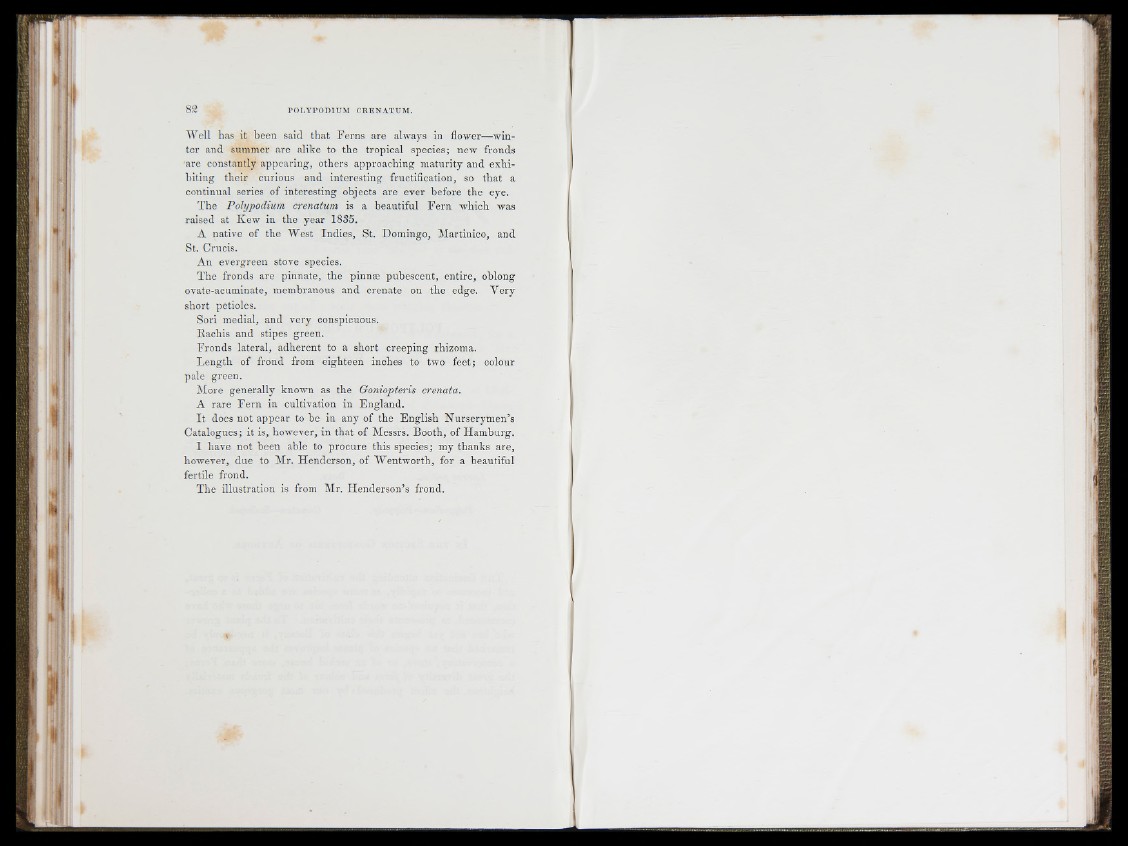
83 p o l y p o d i u m c r e n a t u m .
W e ll has it been said that Ferns are always in flower—winte
r and summer are alike to the tropical species; new fronds
are constantly appearing, others approaching maturity and ex h ibiting
th e ir curious and intei'esting fructification, so th a t a
continual series of interesting objects are ever before the eye.
The Polypodium crenatum is a beautiful F e rn which was
raised at Kew in the year 1835.
A native of the West In d ie s, St. Domingo, Martinico, and
St. Crucis.
An evergreen stove species.
The fronds are pinnate, the pinnæ pubescent, entire, oblong
ovate-acuminate, membranous and crenate on the edge. Ve ry
short petioles.
Sori medial, and very conspicuous.
Rachis and stipes green.
Fronds lateral, adherent to a short creeping rhizoma.
L en g th of frond from eighteen inches to two feet; colour
pale green.
More generally known as the Goniopteris crenata.
A rare F e rn in cultivation in England.
I t does not appear to be in any of the E nglish N u rse rym en ’s
Catalogues; it is, however, in that of Messrs. Booth, of Hamburg.
I have not been able to p rocure this species; my thanks are,
however, due to Mr. Henderson, of Wen tw o rth , for a beautiful
fertile frond.
The illustration is from Mr. H en d e rso n ’s frond.
i ë |